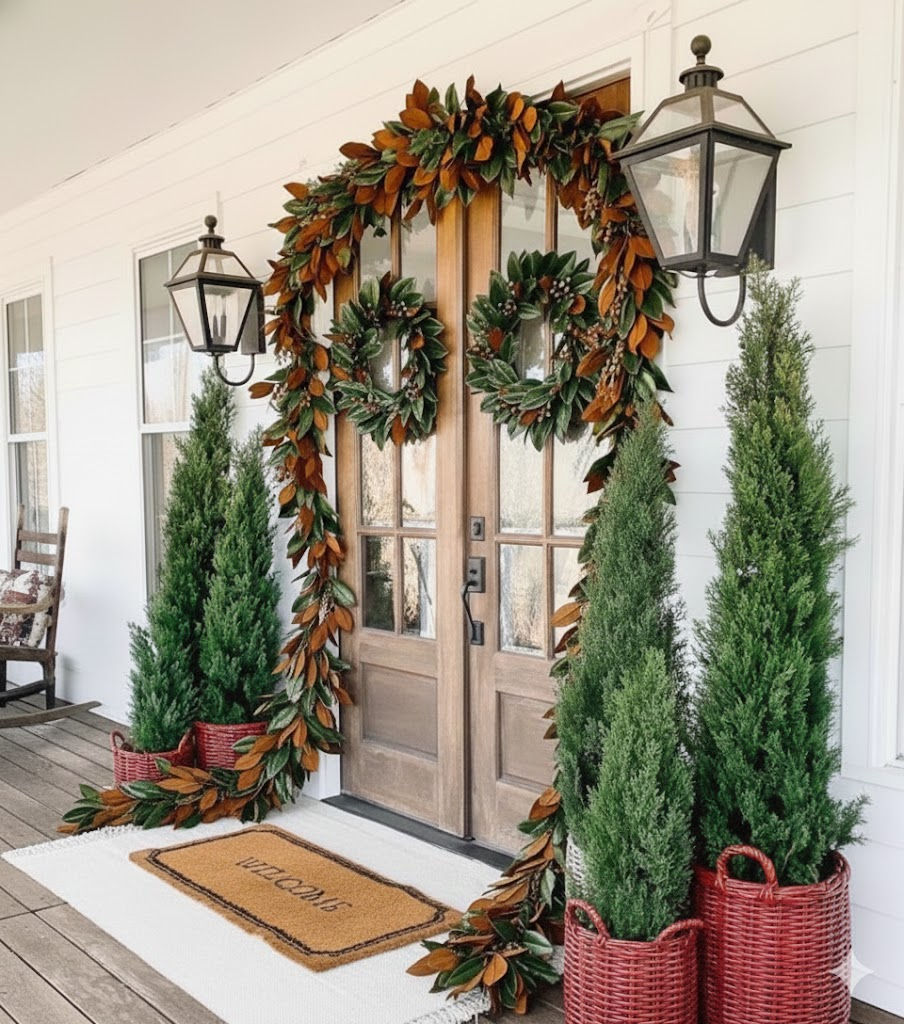•Status in Florida: Native
•Size at Maturity: Typically grows 4 to 8 feet tall and wide, with a moderate growth rate.
•Phenology: Evergreen shrub with opposite leaves and tubular orange to red flowers in terminal clusters.
•Life Cycle: Perennial
•Bloom Season: Spring to fall, with peak bloom in summer and fall.
•Deciduous, Dioecious, Evergreen: Evergreen
•Sunlight Requirements: Full sun to partial shade
•Soil Texture: Well-drained sandy or loamy soils
•Soil pH: Tolerant of a wide range, but prefers slightly acidic to neutral (pH 6.0-7.0)
•Moisture Requirements: Prefers moderately moist soil, but can tolerate drought once established
•Tolerance to Salt Spray: Moderate tolerance
•Recommended Landscape Uses: Butterfly gardens, pollinator gardens, native plant gardens, hedge or screen plantings, wildlife habitats
•Maintenance Tips: Prune as needed to maintain shape and remove dead or damaged branches. Firebush may benefit from occasional fertilization to promote healthy growth.
•Considerations: Firebush is generally pest and disease resistant but may be susceptible to scale insects and sooty mold. Some cultivars may be thorny.
•Deer and/or Rabbit Resistance: Moderately resistant; typically not preferred by deer or rabbits.
•Edible: The ripe berries of Firebush are edible, but they have a bitter taste and are not commonly consumed.
•Medicinal Uses: Traditionally used in folk medicine for various purposes, including as a treatment for skin conditions and gastrointestinal issues.
•Toxicity to Pets: Not known to be toxic to pets, but ingestion of large quantities of berries may cause gastrointestinal upset.
•Florida Native Companion Plant: Beautyberry (Callicarpa americana), coontie (Zamia integrifolia)
•Wildlife Benefit: Firebush provides nectar for butterflies, hummingbirds, and other pollinators. The berries are eaten by birds and small mammals.
•Caterpillar Host Plant: Firebush is a host plant for the caterpillars of various butterflies, including the Dorantes longtail (Urbanus dorantes) and the fiery skipper (Hylephila phyleus).
⸻
🌿 The Hamelia Mess: Understanding Firebush Varieties
The Florida Association of Native Nurseries (FANN) article, authored by naturalist Roger L. Hammer, delves into the complexities surrounding firebush (Hamelia) species in Florida’s horticultural trade. The primary concern is the mislabeling and widespread sale of non-native or hybrid firebushes as native species, leading to ecological and horticultural confusion. 
(https://www.fann.org/info/plants/the-hamelia-mess/)
⸻
🔍 Key Firebush Types Explained
Hamelia patens var. patens (Florida Native Firebush)
•Origin: Native to Florida, the Bahamas, and parts of tropical America.
•Leaf Characteristics: Slightly hairy (pubescent) leaves arranged typically in whorls of three.
•Flower Color: Reddish-orange to red tubular flowers.
•Cold Hardiness: Dies back in North Florida winters but regrows in spring.
•Ecological Value: Highly beneficial to native pollinators and birds.
Hamelia patens var. glabra (Non-native Firebush)
•Origin: Native to Central America and parts of South America.
•Leaf Characteristics: Smooth (glabrous) leaves typically in whorls of four.
•Flower Color: Yellow with reddish-orange base, often with red lines along the floral tube.
•Cold Hardiness: Less tolerant of cold; may not survive North Florida winters.
•Common Mislabels: Often sold as ‘African Firebush’, ‘Dwarf Firebush’, or ‘Compacta’.
•Ecological Concern: Potential to hybridize with native species, possibly affecting local ecosystems. 
‘Calusa’ (Native Cultivar)
•Origin: A selected cultivar of the native Hamelia patens var. patens.
•Growth Habit: More compact and denser than the wild type.
•Leaf Characteristics: Deeper red foliage, turning burgundy in cooler weather.
•Flower Color: Bright red-orange flowers.
•Cold Hardiness: Similar to the native variety; regrows after winter dieback.
•Ecological Value: Maintains benefits for native wildlife.  
Hamelia cuprea (Non-native Species)
•Origin: Native to Jamaica, Cuba, Haiti, and the Cayman Islands.
•Leaf Characteristics: Glossy, copper-colored leaves in whorls of three.
•Flower Color: Bell-shaped yellow flowers that age to reddish-orange.
•Cold Hardiness: Not cold-hardy in North Florida.
•Common Mislabels: Sometimes incorrectly called ‘Bahama Firebush’.
•Ecological Concern: Not native; may not support local wildlife effectively. 
Hybrids (e.g., Hamelia cuprea × Hamelia patens)
•Origin: Result from crossbreeding between native and non-native species.
•Flower Characteristics: Intermediate traits; flowers resemble H. cuprea in color but are narrower.
•Ecological Concern: Potential to disrupt native plant genetics and ecosystems. 
⸻
⚠️ Why This Matters
•Mislabeling Issues: Non-native varieties are frequently mislabeled and sold as native, leading to unintended ecological consequences.
•Hybridization Risks: Non-native species can crossbreed with native firebushes, potentially altering the genetic makeup of native populations.
•Wildlife Impact: Non-native and hybrid varieties may not provide the same level of support to local pollinators and bird species as the true native firebush.
⸻
top of page
PriceFrom $10.00
Sales Tax Included |
Customers Also View
Your content has been submitted
Your content has been submitted
Your content has been submitted
Your content has been submitted
bottom of page































